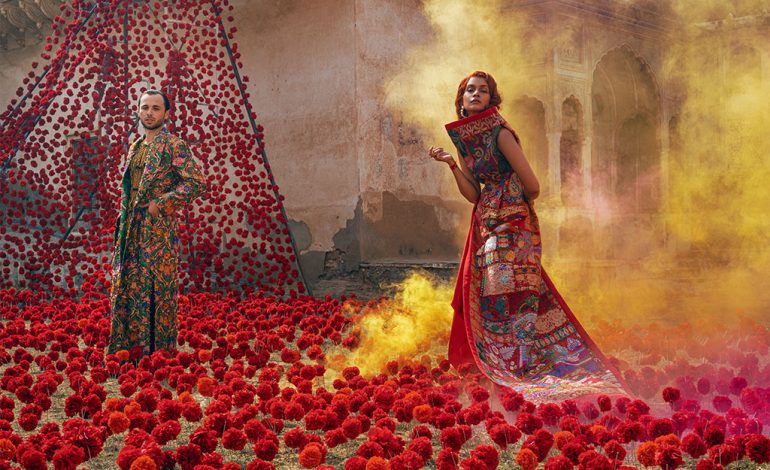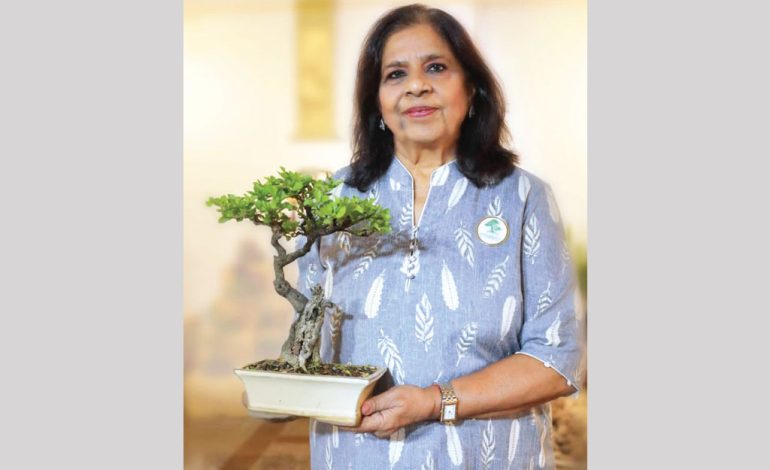
A Traditional Wedding in a Contemporary World
Doyel Joshi and Neil Ghose Balser’s palace wedding in Mandawa, Rajasthan, was far from a conventional one. It reflected the interdisciplinary artists as two individuals, their world views, values and the love that inspires and liberates them.
 Talk of a palace wedding and the first thing that comes to mind is an imperial setting with royal décor and all the wedding paraphernalia that comes with it. However, this wedding was far from being conventional, just like the bride and groom, you could well say. Interdisciplinary artists Doyel Joshi and Neil Ghose Balser’s palace wedding is a story of their worlds amalgamating through their artistic practice. The founders of How Are You Feeling Studio, a multidisciplinary studio in Mumbai that creates interventions and engagement in art outside of the conventional gallery, planned their own contemporary wedding that imitated who they are, in every way.
Talk of a palace wedding and the first thing that comes to mind is an imperial setting with royal décor and all the wedding paraphernalia that comes with it. However, this wedding was far from being conventional, just like the bride and groom, you could well say. Interdisciplinary artists Doyel Joshi and Neil Ghose Balser’s palace wedding is a story of their worlds amalgamating through their artistic practice. The founders of How Are You Feeling Studio, a multidisciplinary studio in Mumbai that creates interventions and engagement in art outside of the conventional gallery, planned their own contemporary wedding that imitated who they are, in every way.
Everything was uniquely different in the wedding—right from the wedding attires to the setting. The décor was swapped for art installations, stage for immersive spaces and the ceremonies set within the experiential.
A love story waiting to happen
Doyel Joshi and Neil Ghose Balser met on the steps of Parsons, the New School of Design in New York City and their friendship and creative partnership transcended into a lifetime partnership. “From the word go, Neil and I found a creative partnership. He did sound design for my thesis project and that set the tone for our relationship which grew from friendship to life partnership as our personal passion and purpose grew to align,” informs Doyel.
 Both the artists belong to different backgrounds. Joshi comes from a traditional Brahmin Marwari family, with her father belonging to Churu and mother to Pilani. Born and raised in Mumbai, she educated and socialised in New York. “I grew up with my siblings in a home bound by heritage but also unafraid to step out of its perceived confines when needed. My father said, in one of his early courtship letters to my mother in 1988, he wrote: ‘I am a traditional man with a modern approach’. I guess the apple doesn’t fall far from the tree,” states Doyel. Neil is a hybrid German Bengali raised in Germany and India.
Both the artists belong to different backgrounds. Joshi comes from a traditional Brahmin Marwari family, with her father belonging to Churu and mother to Pilani. Born and raised in Mumbai, she educated and socialised in New York. “I grew up with my siblings in a home bound by heritage but also unafraid to step out of its perceived confines when needed. My father said, in one of his early courtship letters to my mother in 1988, he wrote: ‘I am a traditional man with a modern approach’. I guess the apple doesn’t fall far from the tree,” states Doyel. Neil is a hybrid German Bengali raised in Germany and India.
In New York City started their eight-year long life- and creative partnership which was confronted with cultural and societal perils when they decided to marry. “While it wasn’t the most comfortable proposition to marry a German-Bengali boy, my parents did ultimately see the purpose, values and goals Neil and I shared to create a life unique to our passions. While not always easy, they were able to see the bigger picture with us.”
A palace wedding happens
The wedding that was far from a conventional wedding took place in Mandawa Castle, 20 km from Churu— where her grandfather’s haveli is located. “My father spent his childhood years there. Through Neil’s parents, we found another connection to Aniruth Banna, one of the three brothers who owns and runs Mandawa Castle,” she informs. The duo strongly believes that the relationship was aligned in cosmic ways.
 “An Indian wedding offers a wealth of ritualistic and spiritual mystique that by design elevates emotions, creating connections and bonds across families, friends and perceived differences. At our wedding, art became the language through which uncles from the German farm family, Indian aunties in ghoonghat, and Bengali academics as well as curators from New York could rejoice. Expectations and judgment were caught off-guard, only love remained,” Neil sheds light on the wedding style.
“An Indian wedding offers a wealth of ritualistic and spiritual mystique that by design elevates emotions, creating connections and bonds across families, friends and perceived differences. At our wedding, art became the language through which uncles from the German farm family, Indian aunties in ghoonghat, and Bengali academics as well as curators from New York could rejoice. Expectations and judgment were caught off-guard, only love remained,” Neil sheds light on the wedding style.
The wedding ceremonies were traditional with an unconventional touch. It was important for the couple to maintain the sanctity of the wedding rituals from pitru pooja (to begin the wedding) to bahu bhat (bride’s welcome in the groom’s home). “We had 17 rituals and ceremonies packed into the wedding.
In the process of planning, the wedding tradition and rituals played an equally important role as did contemporary ideas and notions. Our guests came from all walks of life and backgrounds so it was important that they could connect in the light of us coming together in this ceremonial bond. It did not feel unconventional to do the wedding, we just looked at ways to connect across the board—around our love,” he adds.
Channeling their artistic vision
The duo decided to turn their wedding into an art exhibit. Balser adds, “We wanted our wedding to reflect who we are as people and our values. It echoes in our wardrobes, the choice of venue, the ceremonies, the menu, the invitations, the photographs and the emotions our loved ones felt at the palace wedding.”
As a part of the wedding decor, the artists showcased a magnanimous art installation, The Cascading Flowers, with 20,000 genda phool made of fabric excess. The idea behind employing flowers from fabric excess came from their personal experience, as they discovered that the excessive waste could be involved with floral decorations at weddings and made a conscious choice to use a selection of local flowers for the wedding.
 “The idea of contemporising was not to westernise but to modernise. Instead of moving away from culture or rituals, the wedding became a study of the origins of rituals,” says Doyel. “It was motivated by the desire to bring like-minded people to honour yet reimagine what a Hindu wedding is, and why. Wedding guests said that it felt like an Indian Vedic wedding yet very different. A lot of inspiration came from endless conversations with family and friends, deep diving into our respective family histories and traditions, motifs that we picked up from there and then finding references to today.” During the planning, Doyel’s mother and her large family from Pilani became a research hub for provenance.
“The idea of contemporising was not to westernise but to modernise. Instead of moving away from culture or rituals, the wedding became a study of the origins of rituals,” says Doyel. “It was motivated by the desire to bring like-minded people to honour yet reimagine what a Hindu wedding is, and why. Wedding guests said that it felt like an Indian Vedic wedding yet very different. A lot of inspiration came from endless conversations with family and friends, deep diving into our respective family histories and traditions, motifs that we picked up from there and then finding references to today.” During the planning, Doyel’s mother and her large family from Pilani became a research hub for provenance.
While the wedding ceremonies were illusive, the couple admit that the bonds that were created through rituals had a silent yet large impact on their married life. Six months into marriage and they share their short-sighted perspective on marriage. “Our idea behind giving a new meaning to being tied in matrimony is different. From what we can reflect on and the intention with which we went into this marriage, it is freedom with a sense of security. Freedom to live out the full expression of who we are with the safety of not being judged or unloved,” is their concluding statement.







